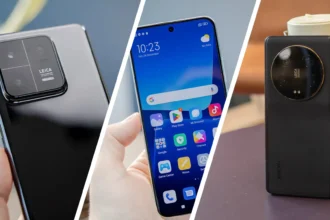The tech world is abuzz with rumors and speculation about Samsung’s upcoming flagship smartphone, the Galaxy S25. One of the most intriguing aspects of these rumors centers around the device’s chipset. Historically, Samsung has relied on its in-house Exynos chips and Qualcomm’s Snapdragon processors for its flagship phones. However, recent reports suggest that the Galaxy S25 might feature a chipset from an unexpected new player in the silicon market. This potential shift could have significant implications for Samsung and the broader smartphone industry.
The Current State of Samsung’s Chipsets
The Exynos Challenge
Samsung’s Exynos chipsets have faced mixed reviews over the years. While they have seen substantial improvements, they often lag behind Qualcomm’s Snapdragon processors in terms of performance and efficiency. This discrepancy has led to criticism from consumers and tech enthusiasts, particularly in regions where Samsung’s flagship devices are powered by Exynos chips instead of Snapdragon counterparts.
Qualcomm’s Dominance
Qualcomm’s Snapdragon processors are renowned for their superior performance, power efficiency, and robust ecosystem support. The Snapdragon 8 Gen 1, for example, powers many of the top flagship smartphones of 2023, including Samsung’s Galaxy S23 series in certain markets. Despite Qualcomm’s strengths, Samsung has been keen on reducing its reliance on external suppliers and enhancing its in-house capabilities with Exynos.
Entering the Unlikely Silicon Player
A Surprising Turn to AMD
The latest rumors suggest that Samsung might be turning to AMD for the Galaxy S25’s chipset. AMD, traditionally known for its high-performance CPUs and GPUs in the PC and gaming markets, has been making inroads into the mobile space. The collaboration between Samsung and AMD is not entirely new; the two companies previously announced a partnership to bring RDNA GPU architecture to Samsung’s Exynos chips.
The Potential Impact of AMD’s Chipsets
If AMD were to supply the main chipset for the Galaxy S25, it would be a significant departure from Samsung’s traditional approach. AMD’s expertise in high-performance computing and graphics could bring substantial improvements to the Galaxy S25, particularly in areas like gaming, AI, and power efficiency. This collaboration could also help Samsung address the performance gap between its Exynos chips and Qualcomm’s Snapdragon processors.
Technical Advantages of an AMD-Powered Galaxy S25
Superior Graphics and Gaming Performance
One of AMD’s key strengths is its graphics technology. By leveraging AMD’s RDNA architecture, the Galaxy S25 could offer unparalleled graphics performance, making it an ideal choice for mobile gamers. Enhanced GPU capabilities would also benefit other applications, such as augmented reality (AR) and virtual reality (VR), providing a more immersive user experience.
Advanced AI Capabilities
AMD’s processors are known for their robust AI capabilities, thanks to their extensive use of parallel processing. Integrating AMD’s AI technology into the Galaxy S25 could lead to significant improvements in AI-driven features, such as enhanced photography, real-time language translation, and smarter personal assistants.
Improved Power Efficiency
One of the biggest challenges in mobile technology is balancing performance with power efficiency. AMD has made significant strides in this area with its latest Ryzen and Radeon products. Applying this expertise to the mobile chipset could result in a Galaxy S25 that offers longer battery life without compromising on performance.
Challenges and Considerations
Compatibility and Optimization
One of the primary challenges of switching to a new chipset supplier is ensuring compatibility and optimization. Samsung and AMD would need to work closely to ensure that the new chipset integrates seamlessly with Samsung’s hardware and software ecosystem. This process could be complex and time-consuming, potentially impacting the Galaxy S25’s development timeline.
Market Perception
Another consideration is market perception. Consumers have grown accustomed to seeing Qualcomm and Exynos chipsets in Samsung’s flagship devices. Introducing a new player, even one as reputable as AMD, could lead to uncertainty and skepticism. Samsung would need to communicate the benefits clearly and effectively to ensure a positive reception.
The Future of Samsung’s Flagship Devices
Strategic Partnerships
The potential collaboration with AMD highlights Samsung’s strategic approach to partnerships. By leveraging AMD’s strengths, Samsung can enhance its flagship devices and stay competitive in a rapidly evolving market. This strategy could also pave the way for further innovations and partnerships in the future.
Setting New Standards
If successful, the integration of AMD’s chipset into the Galaxy S25 could set new standards for the industry. It would demonstrate the potential of cross-industry collaboration and highlight the benefits of combining expertise from different technological domains. This move could also inspire other smartphone manufacturers to explore similar partnerships, driving further innovation in the mobile space.
Conclusion
The rumors surrounding the Galaxy S25’s chipset are among the most exciting developments in the tech world. If Samsung does indeed partner with AMD, it could mark a significant turning point for both companies. The potential benefits in terms of performance, graphics, AI capabilities, and power efficiency are substantial. However, challenges remain, and the success of this endeavor will depend on careful execution and strategic planning. As we await official confirmation and further details, the prospect of an AMD-powered Galaxy S25 continues to generate excitement and anticipation among tech enthusiasts and consumers alike.
















